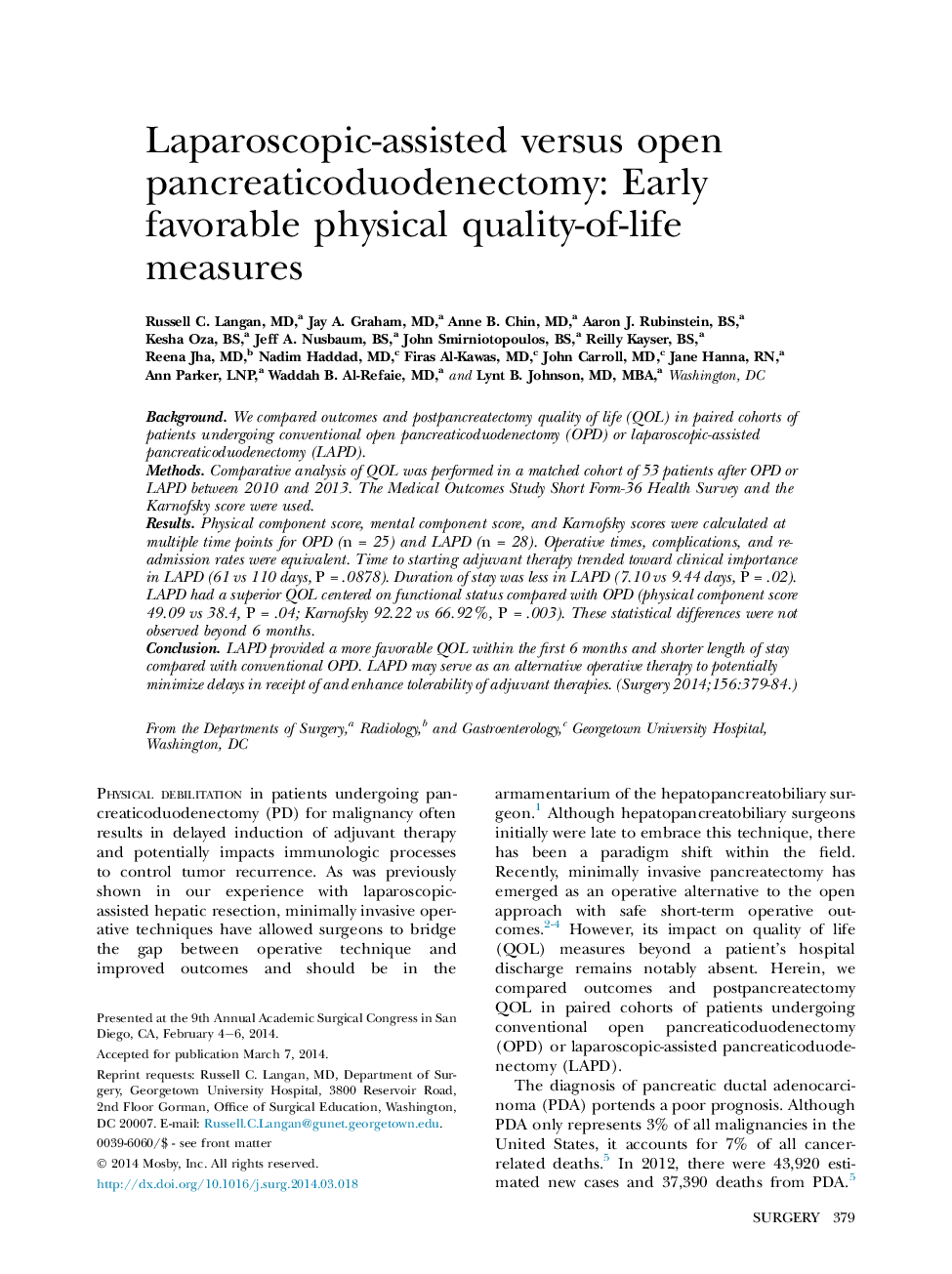| Article ID | Journal | Published Year | Pages | File Type |
|---|---|---|---|---|
| 6255687 | Surgery | 2014 | 6 Pages |
BackgroundWe compared outcomes and postpancreatectomy quality of life (QOL) in paired cohorts of patients undergoing conventional open pancreaticoduodenectomy (OPD) or laparoscopic-assisted pancreaticoduodenectomy (LAPD).MethodsComparative analysis of QOL was performed in a matched cohort of 53 patients after OPD or LAPD between 2010 and 2013. The Medical Outcomes Study Short Form-36 Health Survey and the Karnofsky score were used.ResultsPhysical component score, mental component score, and Karnofsky scores were calculated at multiple time points for OPD (n = 25) and LAPD (n = 28). Operative times, complications, and readmission rates were equivalent. Time to starting adjuvant therapy trended toward clinical importance in LAPD (61 vs 110 days, P = .0878). Duration of stay was less in LAPD (7.10 vs 9.44 days, P = .02). LAPD had a superior QOL centered on functional status compared with OPD (physical component score 49.09 vs 38.4, P = .04; Karnofsky 92.22 vs 66.92%, P = .003). These statistical differences were not observed beyond 6 months.ConclusionLAPD provided a more favorable QOL within the first 6 months and shorter length of stay compared with conventional OPD. LAPD may serve as an alternative operative therapy to potentially minimize delays in receipt of and enhance tolerability of adjuvant therapies.
